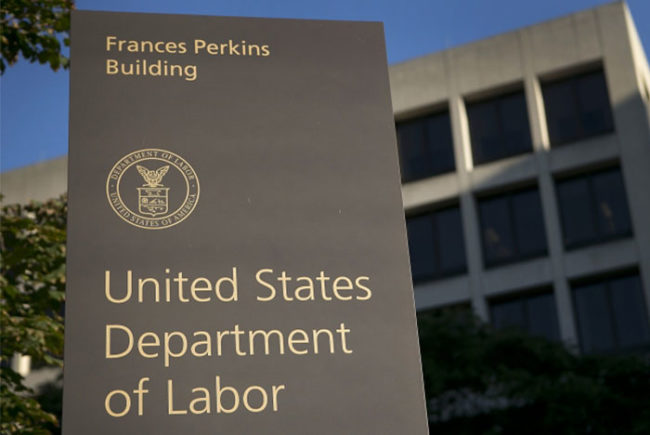OSHA considers health care workplace violence standard, requests comments
The Occupational Safety and Health Administration (OSHA) is considering whether or not to develop a new standard to prevent workplace violence in health care and social-assistance settings. The agency has issued a public Request for Information on the extent and nature of workplace violence in the industry and the effectiveness and feasibility of methods used to prevent such violence.
Comments and materials may be submitted electronically to the Federal eRulemaking Portal, or via mail, fax or hand delivery. See the Federal Register notice for submission details. The submission deadline is April 6.
The agency also has scheduled a public meeting on Jan. 10 in Washington, D.C., to discuss strategies for reducing incidents of violence in these workplaces.
A recent Government Accountability Office (GAO) report found that the rate of workplace violence against employees providing health care and social assistance services is substantially higher than private industry as a whole. In the report, the GAO also recommended that OSHA assess the need for rulemaking to address this hazard.
"The public meeting is intended to supplement written comments by allowing workers, employers and other stakeholders to describe their experiences with workplace violence, as well as allowing for discussion among stakeholders.
Deadline approaches to comment on 2018 FGI Guidelines
The Facility Guidelines Institute (FGI) is closing the public comment period for its 2018 Guidelines on Monday.
The 2018 Guidelines revision cycle will yield three documents — one each for hospitals, outpatient facilities, and residential health, care and support facilities. FGI has created a draft as well as an electronic comment system for each book.
Comments can be made only on proposed changes to the text (deletions, revisions or new material) in the 2014 FGI Guidelines for Design and Construction of Hospital and Outpatient Facilities and Guidelines for Design and Construction of Residential Health, Care and Support Facilities.
ASHE Energy and Water Survey extended into 2017
The American Society for Healthcare Engineering (ASHE) has extended the deadline to complete its Energy and Water Survey to Jan. 13. ASHE is asking all health care facilities to complete the survey, which will help update ENERGY STAR scoring models in addition to identifying energy and water-use trends.
The data will be anonymously shared with the Environmental Protection Agency with the goals of:
- Updating the ENERGY STAR 1–100 score models for both general medical and surgical hospitals and medical office buildings
- Expanding to new ENERGY STAR 1–100 score models for other health care space types
- Evaluating the potential to develop a 1–100 score for water efficiency
All health care organizations are encouraged to participate. ASHE says a large response rate is critical because large amounts of data are needed to update the ENERGY STAR scoring models. To encourage participation, ASHE will randomly select one survey participant from each ASHE region to win a $250 Amazon gift card.
Joint Commission developing improved nursing home infection-prevention measurement
The Joint Commission’s Department of Health Services Research is conducting a 12-month study of nursing home infection measurement supported through a research contract from the Center for Disease Control and Prevention’s (CDC) Antibiotic Resistance Solutions Initiative.
The study will use the CDC’s National Healthcare Safety Network (NHSN), a measurement system for infection rates at U.S. health care facilities. NHSN provides a free, systematic way to track infections, identify problematic trends, measure progress with prevention strategies and help to reduce the prevalence of health care-associated infections (HAIs).
The Joint Commission says the results of the study will inform policymakers on how prepared nursing homes are to implement standardized measurement of infections and influence new targets and goals to reduce HAIs.
“Standardized measurement of infections is critical to improving health, enhancing patient safety, and reducing morbidity and mortality, and this study will help to uncover the challenges nursing homes face when enrolling and collecting National Healthcare Safety Network data,” says Beth Ann Longo, R.N., NHA, MBA, MSN, associate project director, department of health services research, division of health care quality evaluation at the Joint Commission.
CDC celebrates HAI reductions as public health victory
The Centers for Disease Control and Prevention (CDC) released a final report on a Winnable Battles project launched in 2010 to achieve certain public health targets.
As of 2014, the results include a 50 percent decrease in central line-associated bloodstream infections in acute-care hospitals; 36 percent decrease in health care-associated invasive methicillin-resistant Staphylococcus aureus; 24 percent decrease in catheter-associated urinary tract infections in acute-care hospital wards; 17 percent decrease in select surgical-site infections; and 8 percent decrease in hospital-onset Clostridium difficile infections. The report includes other public health wins, including a decrease in cigarette smoking and birth rates among teenagers.
“Although there is much more to be done, because of the great work of CDC doctors, scientists and public health specialists, and our partners at the federal, state and local levels, in hospitals and health care systems, and in the community, Americans are living longer, healthier lives and avoiding expensive and painful diseases,” says CDC Director Tom Frieden, M.D.





